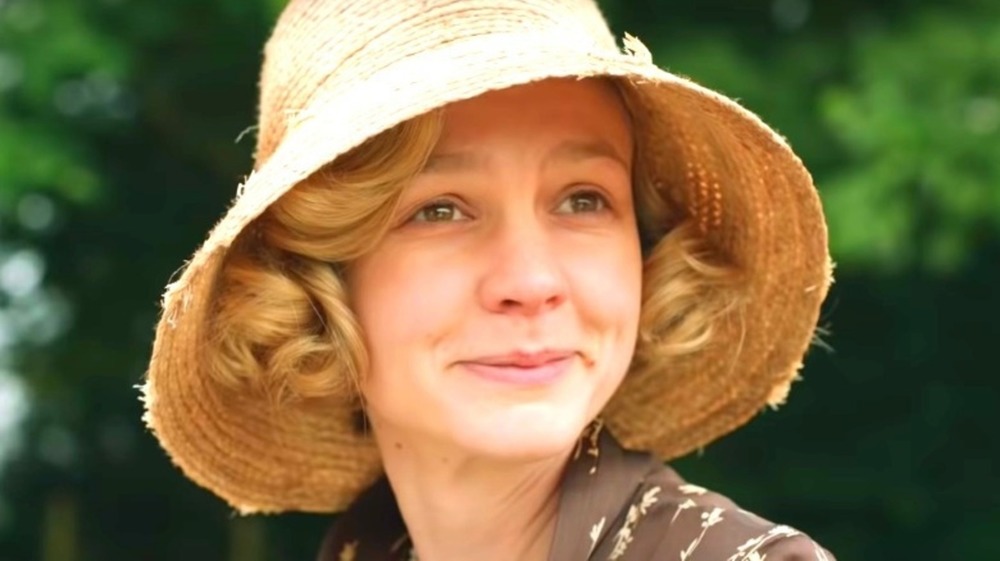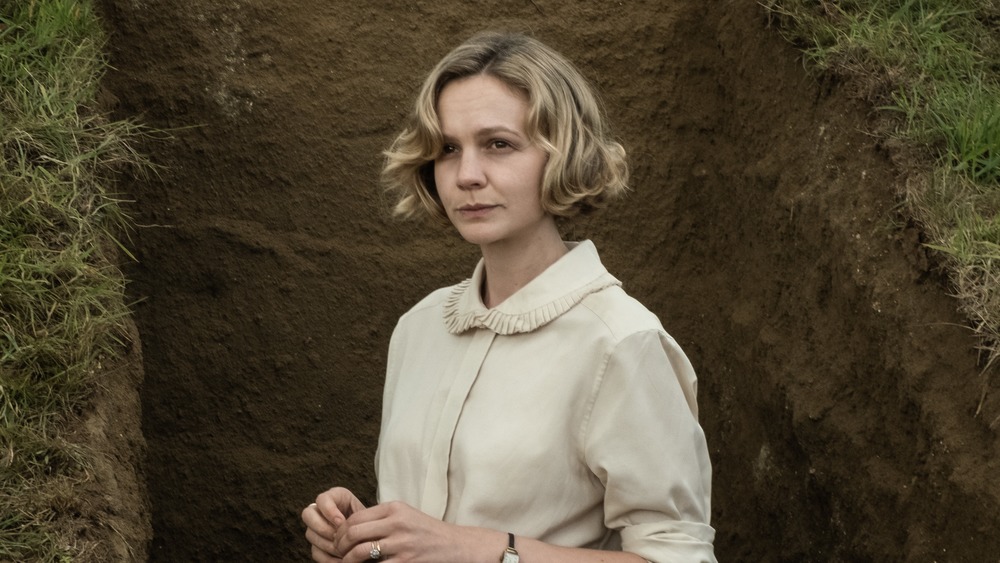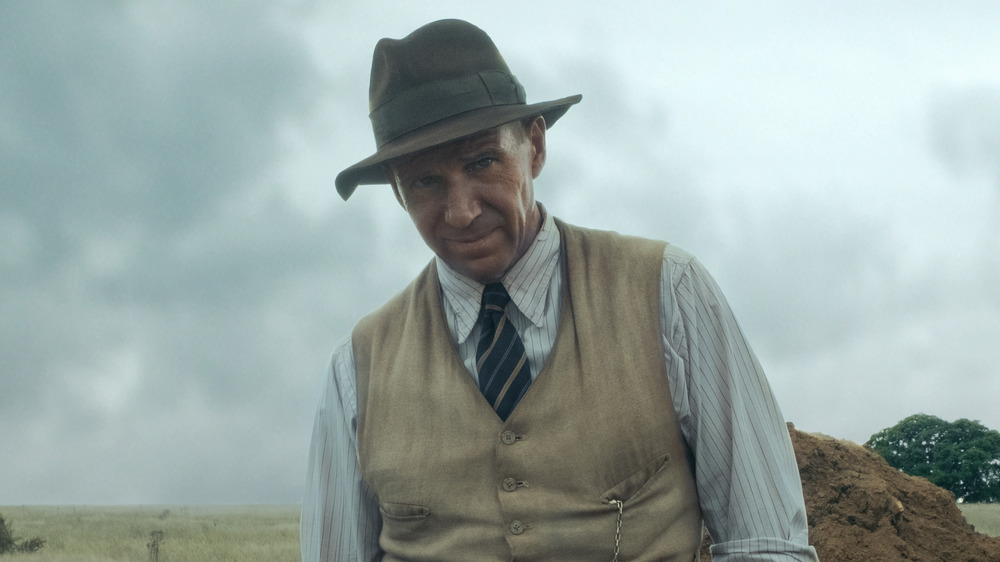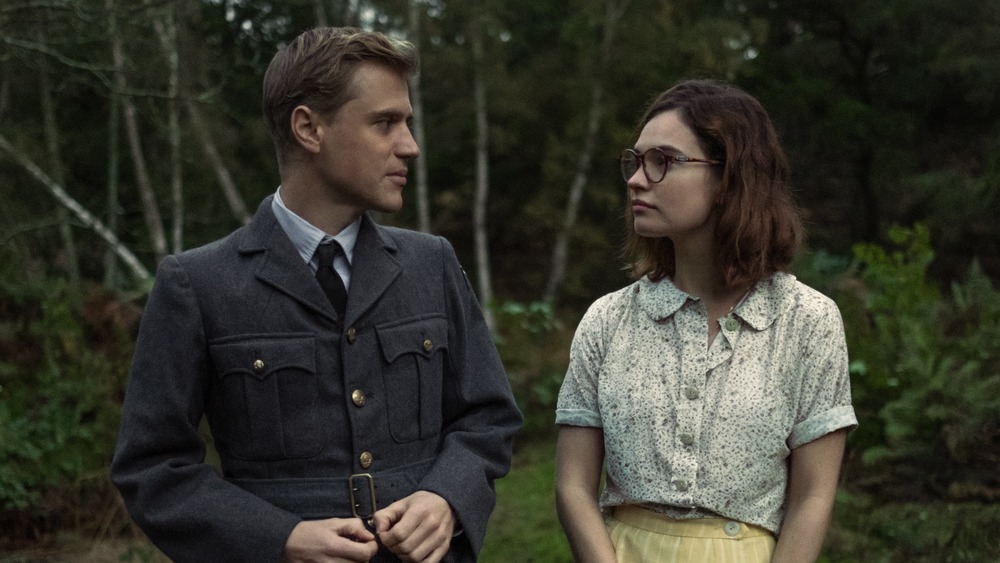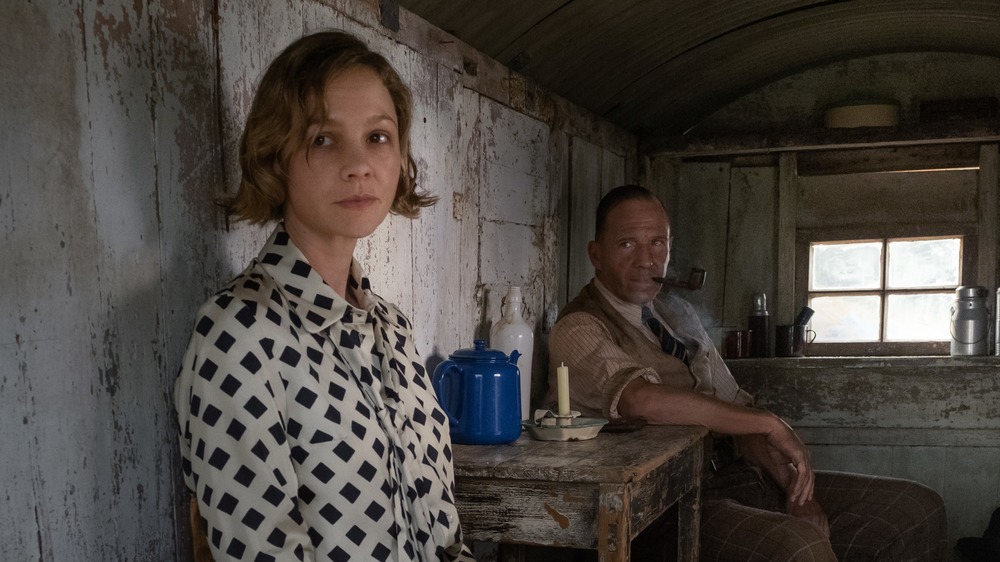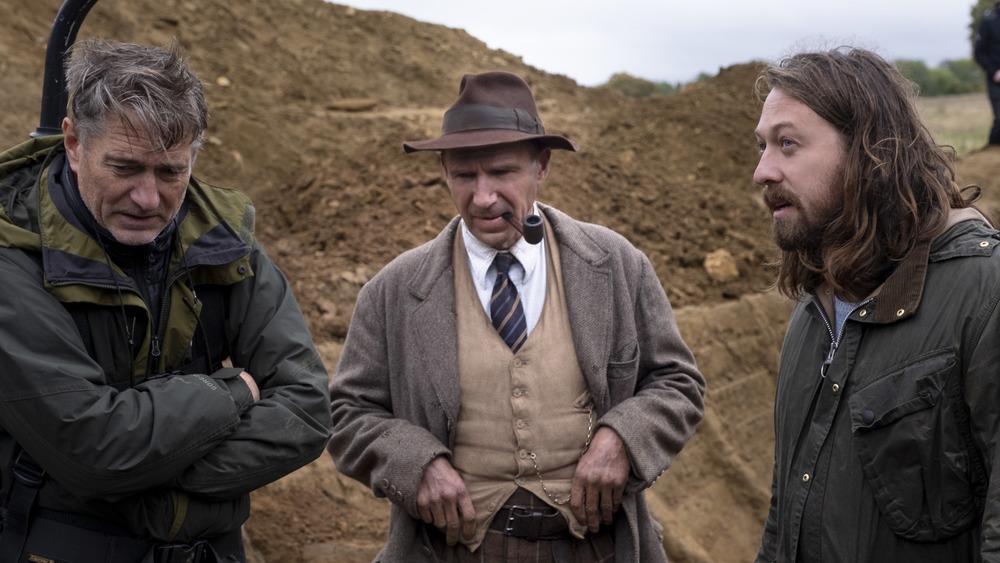The Ending Of The Dig Explained
Contains major spoilers for The Dig
This year, Netflix promises to release an original film every week on its streaming site. Maybe it's an effort to help people cope with the ongoing pandemic, or simply an attempt to gain an edge in the increasingly competitive streaming business, but one of the year's first original films The Dig takes us back to another uncertain, scary moment in history: the eve of World War II.
Known mostly for his work in theater, The Dig's director Simon Stone hopes the film's reflection on the past offers some comfort for everyone currently living through a historical moment. Set in 1939, it tells the true story of a famous archaeological discovery in Suffolk, England. It's a quiet period piece starring the critically acclaimed Carey Mulligan, lead of one of 2020's best films, Promising Young Woman, and Ralph Fiennes, known for a range of dramatic roles from a Nazi in Schindler's List to Voldemort in Harry Potter.
Mulligan plays the wealthy widow Edith Pretty who invites the self-trained archaeologist Basil Brown (Fiennes) to excavate the strange mounds on her property. At first, it's a small operation that only Edith and Basil believe in. The local museum officials are scrambling to complete other jobs before war breaks out and have little interest in this one. However, when Basil uncovers the remains of a buried ship, believed to be a king's burial site, the now-interested British Museum steps in to take over and complicate the situation.
Together, the archaeologists discover a wealth of delicate artifacts that date back some 1400 years even as the hardships of the present, the impending war and Edith's declining health, loom over their efforts. Then, amidst competing interests in the found treasure, an official inquest decrees that Edith has ownership of everything found on the site. She decides to generously give it all to the British Museum.
Now, let's dig into the truth of the story, how the movie ends, and how that ending both reflects and diverges from history.
Edith Pretty faces her own mortality
Based on the real woman of the same name, the film's Edith Pretty has long had a love for archaeology. She begins the film excited to discover what's underneath the mounds on her Sutton Hoo property — they're what drew her and her late husband to buy it in the first place. Her young son, Robert (Archie Barnes), is just as eager, leading them both to strike up a friendship with Basil. However, partway through the film, Edith is diagnosed with a terminal heart condition. Her focus shifts to worrying over who will be there for her son when she passes away.
With the knowledge that she's dying, Edith is understandably distraught, but Basil comforts her by saying that people are all "part of something continuous." He says it can be seen through what's left behind — in the cave paintings or the iron rivets buried underground. This conversation seems to inspire her to gift all of the treasure to the British Museum, so as many people as possible can see it and learn about those who came before them.
According to the U.K. National Trust, the real Edith Pretty passed a few years later, in 1942, years before the artifacts were shown in public. Her sister took in her son and her name was attached to the museum's display of the Sutton Hoo collection.
Basil Brown doesn't get the recognition he wanted until much later
Like any archaeologist, Basil wants to find something interesting and exciting, but he also wants respect in his field. He's undervalued and looked down upon by his colleagues for his lack of a formal education. So when Charles Phillips (Ken Stott) from the British Museum takes over the excavation, he demotes Basil immediately. Frustrated that he won't get recognition for his discovery, Basil leaves the dig site. However, in one of Fiennes' most iconic scenes, his wife reminds him why he does his job in the first place: He's good at it, and it's a skill he gained from his father and grandfather before him.
The film certainly proves Basil's worth: From the beginning, he believes the burial ground is older than the Vikings, dating it back to the 7th century Anglo-Saxons. None of his peers believe him until they find a coin to prove it. It's his hunch that transforms the burial site into something revolutionary — completely altering how historians view that time period.
Despite Edith's best efforts to ensure everyone knows that Basil discovered the Sutton Hoo burial ground, the film ends by saying he wasn't given credit until recently. The war put his archaeological work on hold but, according to the U.K. National Trust, he did eventually return to the Sutton Hoo site after Edith's death.
Peggy Piggott finds a passionate romance
The archaeologist couple Peggy Piggott (Lily James) and Stuart Piggott (Ben Chaplin) arrive halfway through the film to assist in the excavation. The team lead, Phillips, makes it clear that Peggy, who's just begun her career, isn't there because of any particular skill she possesses but rather for her light bodyweight, which is less likely to damage the site. Peggy, however, soon proves her skill when she's the first to unearth gold. The film doesn't question her ability, but instead focuses on her desire for a more fulfilling romantic relationship.
Her relationship with her husband is unsatisfactory: He's not physically affectionate with her and, as a gay man, is much more interested in one of the other, male archaeologists. Peggy yearns for the desperate love she sees between young soldiers headed for war and the women they'll leave behind. In this vacuum of romance, she falls for Edith's cousin, Rory Lomax (Johnny Flynn). When Rory is called away to serve, it's Edith, faced with her own mortality, who advises Peggy to seize the moment. Peggy breaks up with her husband and, in the final days before Rory must go, has her own passionate night.
It's impossible to say what happened between them after that because Rory wasn't actually a real person. The real Peggy divorced Stuart in the '50s, in the midst of her successful archaeological career, then later remarried an Italian man. However, she and Stuart did work together after their divorce. Hopefully her second marriage was as exciting as her on-screen affair.
The Dig considers death and the legacy one leaves behind
Quite overtly, The Dig is preoccupied with the idea of death. At the center of the film is the burial mound to a long-dead king, but there's also a looming war, Edith's declining health, and a plane crash resulting in a dead pilot whose corpse is deposited in the nearby river. The fleeting human life is juxtaposed with the lasting legacy of what's left behind, whether that's a young son, the rusted iron rivets of a ship, or photographs of an exciting discovery. The film insists that people live on in these things, and that there aren't so many differences between the people living now, in the past, or in the future.
Beyond that, the film more subtly considers people who history doesn't serve as well as, say, the lauded king buried under the mound. Basil and Edith are both underdogs in archaeology: Him, low-class and uneducated, and her, a woman. As the film tells us, Basil was unacknowledged and forgotten for some time because his background kept his name from being attached to the discovery.
The director said the film's message about change is both melancholy and hopeful
In an interview with news.com.au, director Simon Stone said he hopes people watching The Dig during the coronavirus pandemic can find some comfort in the film.
"Looking for an artefact from the sixth century while planes are flying overhead and the war is looming seems slightly ostrich-like, to stick your head in the earth and become obsessed with the past," he said. "But at the centre of the story is that by searching for the lessons of the past, they end up creating a sense of certainty that this too will pass ... Our history is the story of constant change, and I think for audiences watching in the pandemic, it's also a hopeful message."
Additionally, he wanted to show how people can unite in a crisis, despite differences in class or gender. He told the East Anglian Daily Times, "Having the opportunity to tell a celebratory story of cultural complexity and of the solidarity of community in a time of crisis and the breakdown of social boundaries excited me. It felt like a very appropriate look at how teamwork is the core to success in a world where we are more interested in categories and resurrecting borders between people."
That's certainly what The Dig does — right through the triumphant, melancholy ending.
